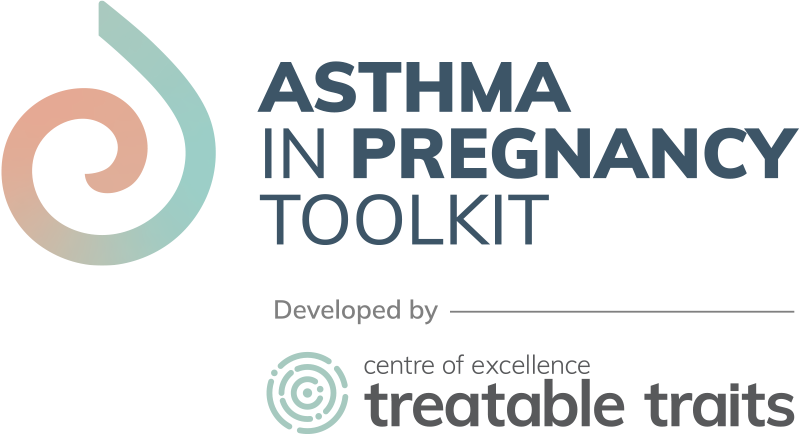Asthma Pathophysiology
Asthma is a consequence of complex gene–environment interactions, with heterogeneity in clinical presentation and the type and intensity of airway inflammation and remodelling (Papi et al. 2018). The key pathophysiological features of asthma which contribute to variable airflow limitation are:
- lung inflammation
- airway hyper-responsiveness
- airway remodelling
- mucous hypersecretion
The asthma phenotypes are broadly categorised into Type 2 High (or simply T2 Asthma) and Type 2 Low (non-T2 Asthma) disease based on clinical presentation (age of onset, presence of comorbidities) and on the presence or absence of indices reflecting the underlying airway inflammation (eosinophilic and non-eosinophilic).
50-70% of asthma patients have T2 Asthma characterized by Type 2 inflammation. Type 2 inflammation is a systemic allergic response that can increase asthma exacerbations and decrease lung function. Subtypes of T2 High asthma include allergic asthma, late-onset eosinophilic, aspirin-exacerbated respiratory disease (AERD), and exercise-induced asthma. Patients with T2 High asthma are often responsive to inhaled corticosteroids, and their disease is associated with increased expression of T2 cytokines such as interleukin (IL)-4, IL-5, and IL-13 driven either by TH2 lymphocytes or innate lymphocytes (ILC-2 cells).

Mechanisms of asthma immunopathology. Adapted and reprinted from The Lancet, Vol. 391 Papi et al., ‘Asthma’, Pages 783-800, Copyright 2018. with permission from Elsevier.
Asthma biomarkers present in Type 2 inflammation include:
- Eosinophils (white blood cells involved in airway inflammation)
- Immunoglobulin E (IgE)
- Fractional exhaled nitric oxide (FeNO)
T2 Low (non-T2) asthma is usually characterized by neutrophilic or pauci-granulocytic airway inflammation. The postulated mechanisms leading to neutrophilic inflammation include dysregulated innate immune response, possible neutrophilic intrinsic abnormalities, and activation of the IL-17 pathway. Subtypes of T2 Low or non-T2 asthma include those with neutrophilic asthma associated with smoke exposure, elderly asthma, and obesity-related asthma (Wenzel et al. 1999).
To learn more about the pathophysiology of asthma please visit the Severe Asthma Website
In pregnancy, at least half of all women with asthma have non-eosinophilic (non-T2) asthma (defined by low FENO and low blood eosinophil measurements) (Murphy et al. 2020) (see Figure below).

Exhaled nitric oxide and blood eosinophil assessment of 195 pregnant women with asthma indicated 53% had non-eosinophilic asthma (Murphy et al. 2020).
Asthma management during pregnancy using biomarkers
Asthma symptoms have been observed to worsen in some women with asthma, and improve in other women with asthma during pregnancy. However, there is no current evidence that indicates Type 2 airway inflammation increases spontaneously during pregnancy, to drive the worsening of some cases of asthma during pregnancy (Couillard et al. 2021). Possible explanations for the effects of pregnancy on asthma include changes in β2-adrenoceptor responsiveness and other changes in airway inflammation induced by high levels of circulating progesterone (Thomson and Vallance 2006) .
Traditionally, treatment decisions for asthma have been made according to a person’s symptoms and clinician judgement. However, symptoms do not always align with airway inflammation, which is the target for inhaled corticosteroid therapy. Consequently, novel approaches to the management of asthma, which involve assessment of eosinophilic lung inflammation have been proposed. The level of eosinophilic lung inflammation may be ascertained by sputum cell counts, or with surrogate markers such as blood eosinophils or fractional exhaled nitric oxide (FeNO).
FeNO measurement
This novel approach to asthma management has been trialled in pregnancy and is an evolving area, but is not yet recommended for routine use.
This approach involves the measurement of FeNO levels to determine the dose of ICS, and an assessment of asthma symptoms control. ICS treatment is increased when FeNO levels are high, decreased when levels are low, with no change when levels are in the mid-range (Murphy et al. 2018). Long-acting beta agonists (LABA), that relax airway smooth muscle to dilate the airways, are added when symptoms remain uncontrolled. This approach was shown to reduce asthma attacks in pregnancy by 50% (Powell et al. 2011), reduce recurrent bronchiolitis by 92% in infancy (Mattes et al. 2014), and reduce asthma diagnosis in the offspring by 54% at pre-school age (Morten et al. 2018). However, there was no benefit on perinatal outcomes, including preterm birth, small for gestational age, perinatal mortality or neonatal hospitalisation at birth (Murphy et al. 2022).

